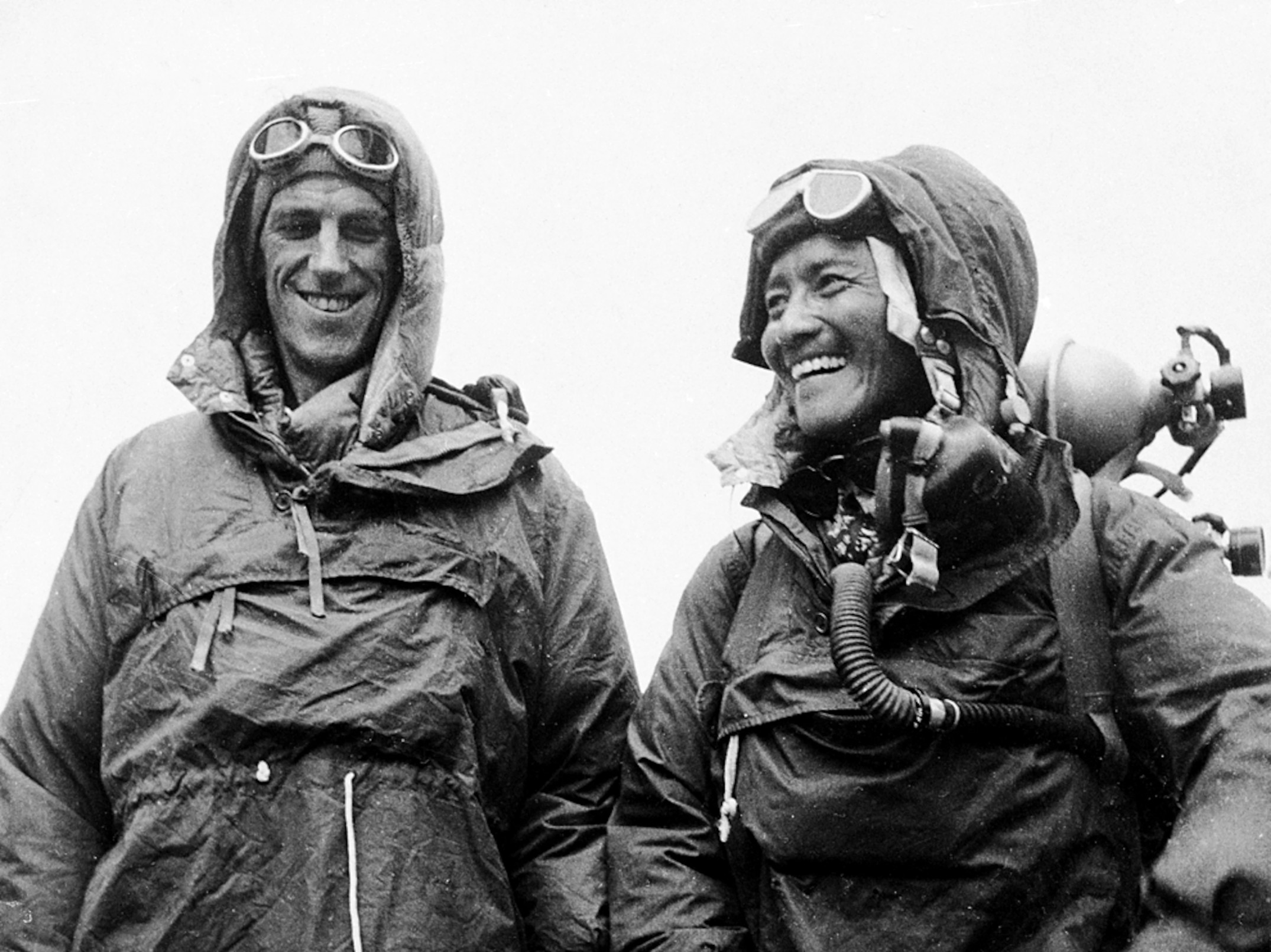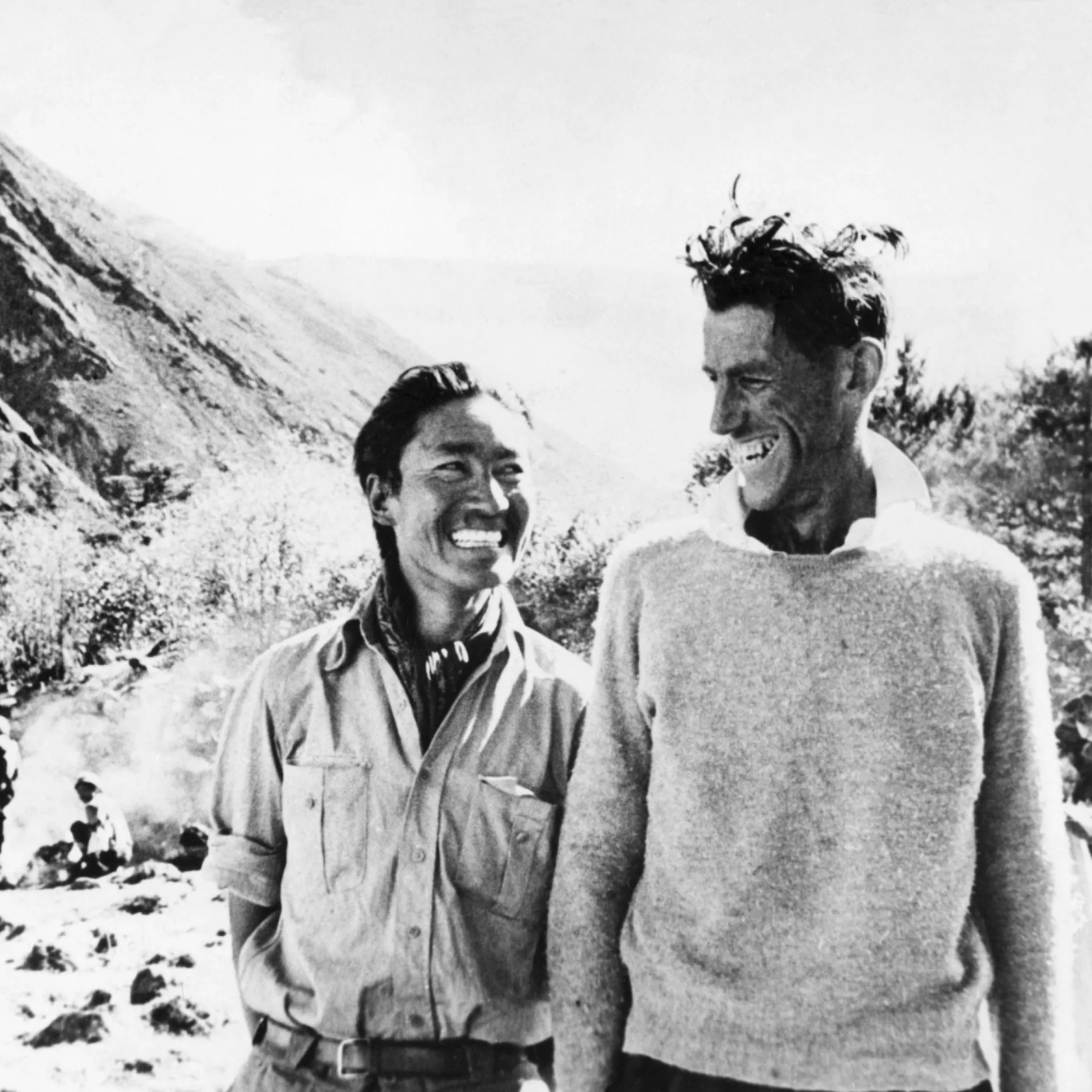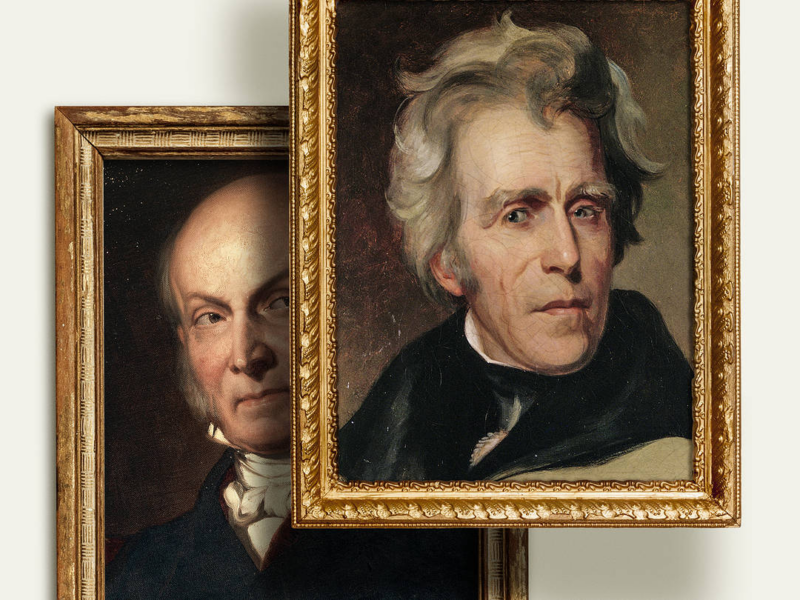The first successful ascent of Mount Everest was achieved by Sir Edmund Hillary from New Zealand and Tenzing Norgay, a Sherpa of Nepal, on May 29, 1953. This historic climb marked a pivotal moment in mountaineering history and remains one of the greatest achievements in human exploration.

The Challenge of Everest
Mount Everest, standing at 29,032 feet (as revised in 2020), has long been a formidable challenge for climbers. Located in the Himalayas on the border between Nepal and Tibet, it is the world’s highest peak. The mountain, named after Sir George Everest, the British Surveyor General of India, had been a target for mountaineers since the early 20th century.
The extreme altitude of Everest presents climbers with the perils of what is known as the “death zone,” an area above 26,247 feet where the air is so thin that it cannot sustain human life for an extended period. In this zone, the body’s oxygen levels drop drastically, leading to altitude sickness, which can be fatal if not managed properly. The risk of frostbite and hypothermia is also significantly higher, as temperatures can plummet to -76 degrees Fahrenheit.
Additionally, the mountain’s unpredictable weather patterns add to the difficulty. Climbers often face strong winds, sudden snowstorms, and avalanches, making the ascent treacherous. The climbing route is riddled with crevasses and icefalls, requiring technical skill, physical endurance, and mental fortitude to navigate.
Historically, these challenges were even greater. Early expeditions lacked the advanced gear and weather forecasting technology available today. They relied on rudimentary oxygen systems and heavy, cumbersome equipment, further complicating their arduous journey.
The formidable nature of Everest is not just a test of physical strength and endurance, but also of human determination and resilience. It demands respect for the mountain and an understanding of its perils. Climbers who take on Everest engage in a profound dialogue with nature, where success hangs in a delicate balance between human ambition and the unforgiving elements of the highest peak on Earth. This intricate dance with danger and beauty is what continues to draw adventurers to the slopes of Everest, each seeking to etch their story in the annals of its majestic and storied history.
Early Expeditions
The early expeditions to Mount Everest were marked by a spirit of exploration and a determination to conquer the unknown. Beginning in the 1920s, these initial forays were predominantly British-led endeavors, undertaken at a time when much of the Himalayan region remained shrouded in mystery. The British Mount Everest Expedition of 1921 was the first to attempt to reach the summit. Although it was primarily a reconnaissance mission, it laid the groundwork for future attempts by charting potential routes and understanding the challenges posed by the terrain and altitude.
Subsequent expeditions in 1922 and 1924 pushed further, attempting to reach the summit. The 1922 expedition was the first to use supplemental oxygen, a significant development in high-altitude mountaineering. Despite this technological advancement, the climbers faced immense difficulties due to the harsh weather conditions, technical challenges of the climb, and the limitations of the equipment of the time.
The 1924 expedition is particularly notable for the mystery surrounding George Mallory and Andrew Irvine, who were last seen just 800 feet from the summit before disappearing. To this day, there is speculation about whether they successfully reached the summit before perishing on the mountain. These early expeditions, fraught with danger and uncertainty, laid the foundation for future attempts on Everest, contributing invaluable knowledge and experience that would eventually lead to the mountain’s conquest.
World War II and Renewed Interest
World War II halted attempts on Everest, but interest resumed in the 1950s. Nepal opened its borders to foreign climbers, paving the way for new expeditions. The 1953 British expedition, led by John Hunt, was a highly organized endeavor, including a team of experienced climbers and Sherpas.
The Successful Ascent
Edmund Hillary and Tenzing Norgay were part of Hunt’s expedition. They were one of the two teams selected to attempt the final climb to the summit. After setting up camp at the South Col, 25,900 feet above sea level, they proceeded to make their historic ascent.
On the morning of May 29, 1953, Hillary and Norgay left their high camp and began the grueling climb. They faced treacherous icefalls, steep slopes, and the thin air of extreme altitude. Utilizing their skills, experience, and determination, they overcame these challenges.
In the early afternoon, Hillary and Norgay reached the summit of Everest. They spent only about 15 minutes at the top of the world, taking photographs and enjoying the unparalleled view. Their success was a testament to human endurance and a symbol of international cooperation.
The Aftermath and Legacy
The news of Hillary and Norgay’s success reached the world on June 2, 1953, the day of Queen Elizabeth II’s coronation. The timing added to the celebration and sense of achievement. Both climbers became international heroes. Hillary was knighted, and Norgay received the George Medal from the British government.
Their ascent of Everest was more than just a mountaineering feat. It represented the culmination of decades of exploration and advances in climbing techniques and equipment. Moreover, it highlighted the critical role of Sherpas in Himalayan mountaineering, a recognition that has grown over time.
Sir Edmund Hillary and Tenzing Norgay’s climb of Mount Everest in 1953 stands as a monumental achievement in human exploration. It symbolized the spirit of adventure, the triumph over seemingly insurmountable challenges, and the power of collaboration between people from different cultures. Their success paved the way for future expeditions and continues to inspire climbers and adventurers worldwide.


